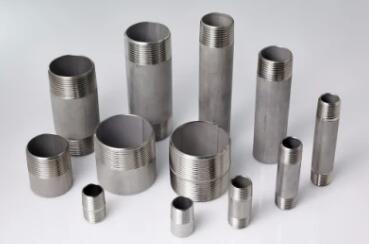Ensuring Sealed Excellence: Strategies for Achieving Leak-Tight Connections with Pipe Fittings
2023-11-30
Introduction:
In the intricate realm of fluid systems, the integrity of connections is paramount. Achieving a leak-tight seal with pipe fittings is not just a matter of functionality; it's a cornerstone of reliability and safety. This blog explores the strategies and best practices employed to ensure leak-tight connections, ensuring that fluid transport systems operate seamlessly without the risk of leaks or compromise.
1. Selecting the Right Fittings:
The journey to a leak-tight connection begins with the careful selection of fittings. Understanding the specific requirements of the application, including pressure, temperature, and compatibility with materials, allows engineers to choose fittings that align seamlessly with the demands of the system.
2. Proper Installation Techniques:
The installation process is a critical factor in achieving leak-tight connections. Employing proper installation techniques, including accurate measurements, secure fastening, and adherence to torque specifications, ensures that fittings are assembled correctly from the outset.
3. Thorough Inspection of Components:
Before installation, it is crucial to inspect all components, including the fittings, pipes, and seals. Any defects, irregularities, or damage should be addressed promptly to prevent potential points of failure that could compromise the integrity of the connection.
4. Correct Use of Sealants and Lubricants:
Sealants and lubricants play a key role in achieving leak-tight connections. Applying the right sealant or lubricant, in the appropriate quantity, helps create a secure seal without over-tightening, reducing the risk of damage to threads or surfaces.
5. Understanding Thread Types:
Different pipe fittings utilize various thread types, such as NPT (National Pipe Thread) or BSP (British Standard Pipe). Understanding the nuances of these thread types and ensuring proper matching during installation is essential for achieving leak-tight connections.
6. Applying Thread Seal Tapes:
In threaded connections, the application of thread seal tapes is a common practice. The use of high-quality tapes, applied correctly in the direction of the threads, helps prevent leaks by creating a reliable seal and providing lubrication during the tightening process.
7. Utilizing Compression Fittings Effectively:
Compression fittings are popular for their ease of use and effectiveness in creating leak-tight connections. Ensuring that compression fittings are installed according to manufacturer guidelines, with proper tube insertion and tightening, is crucial for optimal performance.
8. Consideration of Flared Fittings:
Flared fittings are another reliable option for leak-tight connections. Proper flaring techniques, precise measurements, and attention to angles during installation contribute to the effectiveness of flared connections.
Conclusion:
In the world of fluid transport systems, where precision and reliability are paramount, achieving leak-tight connections with pipe fittings is a non-negotiable imperative. From meticulous selection and proper installation techniques to ongoing inspections and adherence to industry standards, every step in the process contributes to the integrity of the connections. As industries continue to innovate and elevate their engineering practices, the commitment to leak-tight excellence remains a linchpin in the seamless operation of fluid systems.



